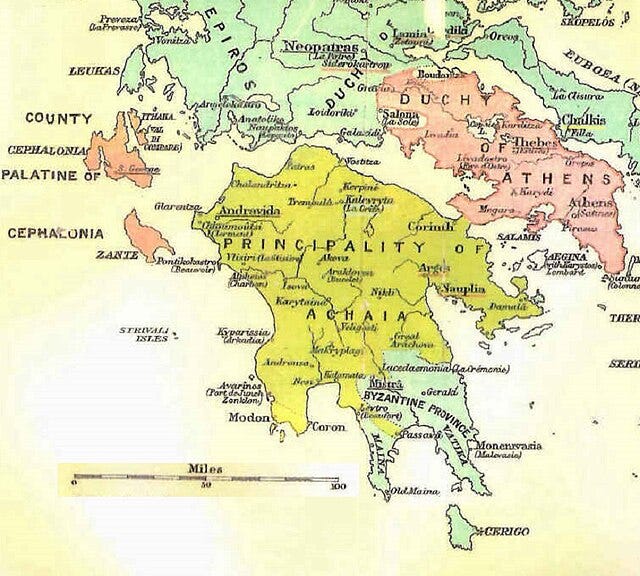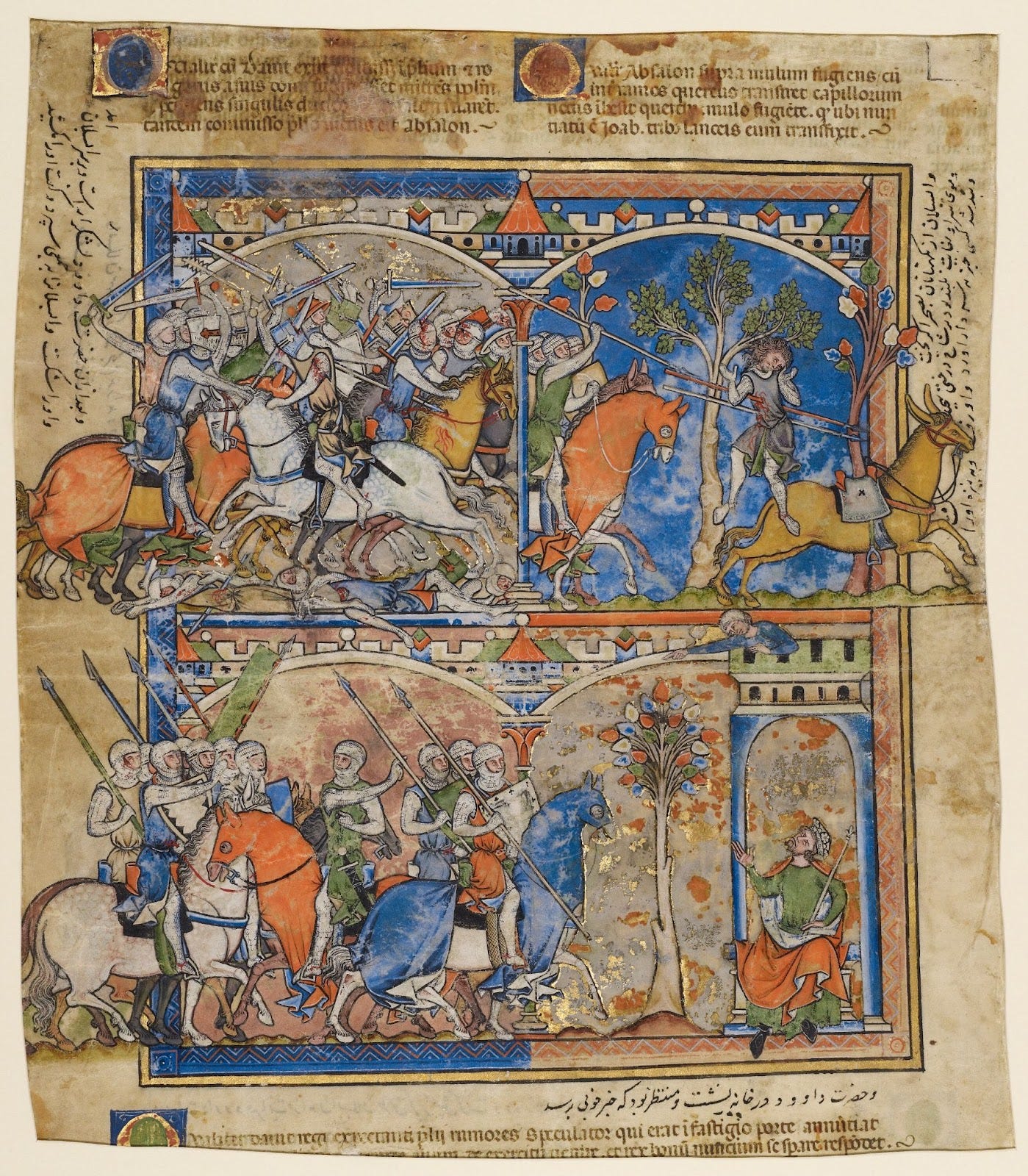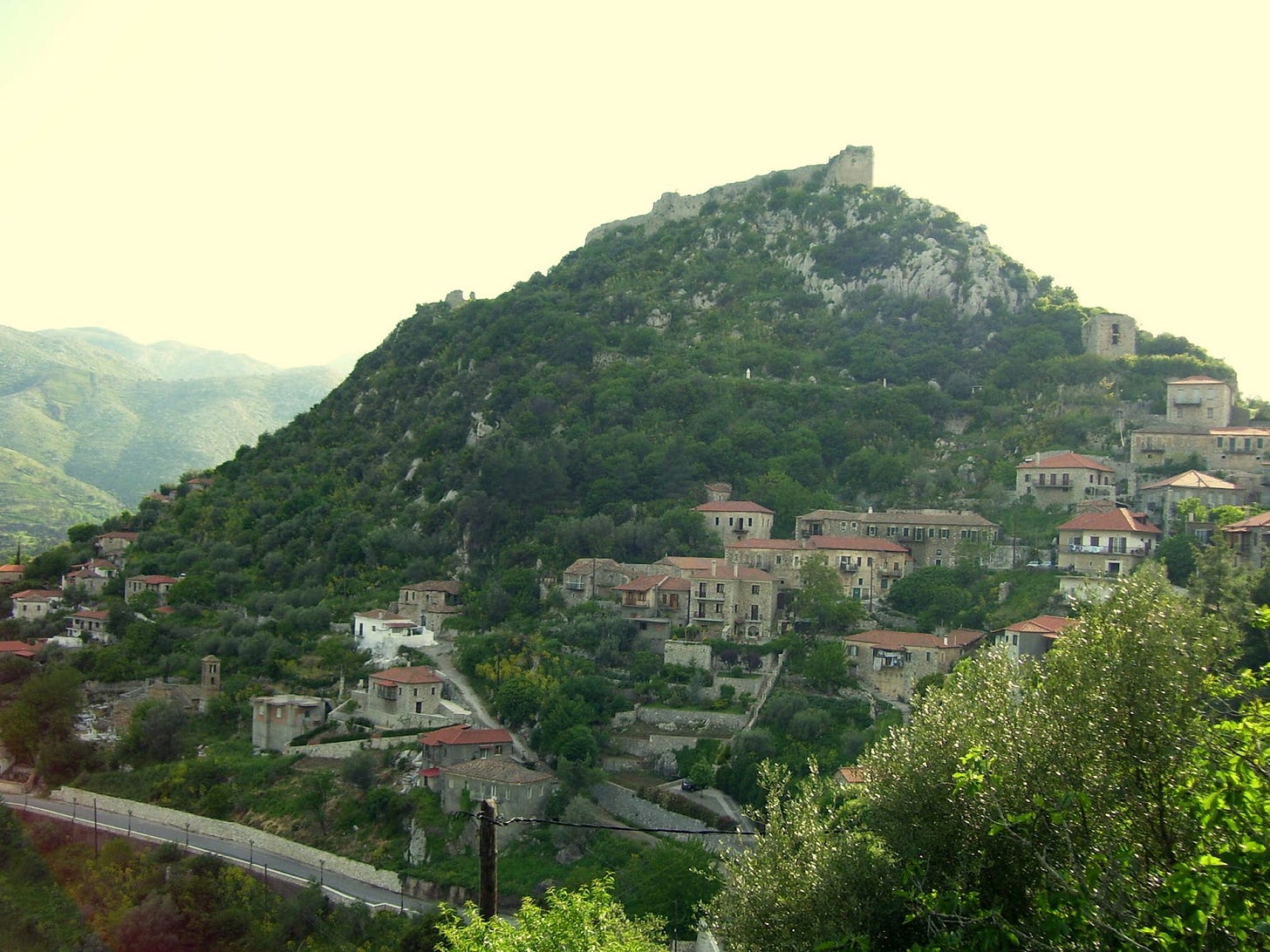As a medieval history graduate, I’ve read and written about countless sieges. Some feature soldiers storming crenellated walls in bloody conquest. Others end in starvation and surrender. But my favourites? The ones won with sheer trickery.
If you are unfamiliar with any references made in this post, don’t worry! I have suggested some further reading at the end…
Geoffrey de Bruyères - more wine sir?
Our first trip is to 13th century Frankish Greece in the aftermath of the tumultuous 4th Crusade. After the taking of Constantinople by a crusading army in 1204 the territories of the Byzantine Empire began to splinter into a disparate set of principalities. Each of these were owned by either opportunist Byzantine noble families, mercenary captains or Frankish noblemen, many of whom had formed part of the crusading forces. Much of the Peloponnese was conquered and to lesser extent settled by Frankish nobles eager to carve out their own fiefdoms. Our main character for this episode is one such Frankish opportunist…
Map of Achaea in 1278, commons.wikimedia
Geoffrey de Bruyères the Younger left his native Champagne for Frankish Greece after the death of his uncle in 1275—confusingly, also named Geoffrey, in an attempt to take on the territory of Karytaina. This was a fortified mountain town in the central Peloponnese within the crusader state, The Principality of Achaea. According to the Chronicle of Morea, due to the rebellious actions of Geoffrey the Youngers’ relative against his liege, Lord William of Villehardouin, his family connection was of no credence as all descendants of Geoffrey de Bruyères’ line had been disinherited. Thankfully for our story however Geoffrey the Younger didn’t take that legal ruling lying down.
Geoffrey set about scanning the landscape of his forebears and seeking what he could acquire, if not by the rules of law and inheritance, then by guile. He learned about the key fortifications in the local region and began plotting. The castle of Araklovon was to pique Geoffrey’s interest first and presumably must have been a more achievable target than his uncle’s nearby former home of Karytaina. His first ploy was to feign illness and request of the castellan of Araklovon that one of his men may enter the fortification to gather water to help succour Geoffrey’s fake ailments. The man he sent to do this repeatedly would use these opportunities to reconnoitre the castle taking note of the architecture, provisions and military forces within the walls. After hearing of his plight the castellan even offered our devious Geoffrey bed and board within the confines of Araklovon until such time as he had regained his strength. Geoffrey managed to smuggle in arms hidden within his clothes for his small band of retainers as part of this ruse.
With intelligence and audacity, Geoffrey set his boldest plan in motion. He gathered his men together and informed them that the castellan had a penchant for wine and even located his favourite tavern. He instructed a few of his men to go to this tavern and ply the castellan and his retinue with wine whilst others would sneak into the castle, wrangle the keys from the porter, and gain entry through the gate. Thus allowing the rest of Geoffrey’s men to join and take up the arms he had smuggled in. The plan worked to a tee, the castle taken, and Geoffrrey was now in command of his first stronghold in the Greek peninsula.
Morgan Picture Bible, c.1250, Digital image courtesy of Getty’s Open Content Program
Did this end well? Better than you might think! As detailed in the Chronicle of Morea, Geoffrey and his men used the castle of Araklovon as a bargaining chip. In reaction to his ploy he was besieged by local forces mustered in the Skorta region but, before being encircled, he wrote to the Emperor of Byzantium (at that time Michael VII Palaiologos) to come and claim the territory of Araklovon, playing this ruler against the local Frankish nobility for personal gain. Whilst he didn’t gain the fief of Karytaina that his uncle had held, he did use this escapade as a means to gain land. He was given the fief of Moraina in Skorta in return for the surrender of Araklovon and started a family of his own there after marrying Marguerite de Cors, a widow of the former Lord of Moraina.
Photo of the ruined fortification of Karytaina, commons.wikimedia
I find these sorts of stories fascinating. The nature of the landscape alone in Frankish Greece would often mean that the rocky outcrops these fortifications were built upon made them formidable. It is quite telling that despite the forces besieging Geoffrey in Araklovon threatening him with ‘so many’ soldiers and also that the commander had sent for ‘Venetian craftsmen, indeed, to construct trebuchets’, the terms he walked away with were very favourable. During this period it was incredibly difficult to successfully besiege a well provisioned fortification without some form of luck, deception or overwhelming numbers to tip the balance in your favour. In a world where castles were often impregnable, sometimes it was brains—not brawn—that won the day.
Join me for the next Sneaky Soldiers volume soon to discover some cunning, cross-dressing, and connivery during the Hundred Years War!
Keen to learn more? Some suggested further reading:
The Medieval Siege, Jim Bradbury, Boydell Press, 1992.
Crusaders as Conquerors: The Chronicle of Morea, tr. Harold E Lurier, Columbia University Press, 1964.
Joinville and Villehardouin: Chronicles of the Crusades, tr. Caroline Smith, Penguin, 2008.
The Fourth Crusade and the sack of Contantinople, Jonathan Phillips, Pimlico, 2005.
The Atlas of the Crusades, Jonathan Riley-Smith, Times Books, 1990 (great for maps!)
Also the Byzantine History Podcast has some great insights into this period and is covering the post 4th crusade situation in its latest releases.







Sun Tzu approved this posting....